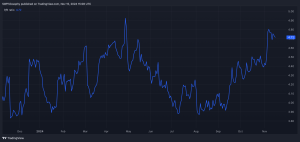While there are many avenues for passive income, dividend stocks offer a relatively straightforward approach. With a decent initial contribution and the power of compounding returns, an investment can grow significantly over time.
I plan to retire comfortably and I won’t be able to do that with my savings alone. I need to make that money work for me — or I’ll work until I die! Fortunately, there are systems in place to help me achieve this.
For example, a Stocks and Shares ISA allows me to invest up to £20k a year tax-free. A variety of assets can be placed in the ISA but I think dividend stocks are the best option. The regular payouts they provide mean my savings build up even when I can’t afford to contribute.
Please note that tax treatment depends on the individual circumstances of each client and may be subject to change in future. The content in this article is provided for information purposes only. It is not intended to be, neither does it constitute, any form of tax advice. Readers are responsible for carrying out their own due diligence and for obtaining professional advice before making any investment decisions.
But achieving £50,000 in passive income still requires some work on my part. An initial £20,000 investment goes a long way to kickstarting my income strategy. But I’ll have to keep adding some money each month to accelerate the outcome.
I’ll also have to pick my shares wisely. Aside from high-yield shares, defensive shares help to keep things steady during volatile economic periods. Some examples are Unilever, GSK and BAE Systems.
A solid dividend stock
Dividend-wise, I’d consider a reliable real estate investment trust (REIT) like Primary Health Properties (LSE: PHP). Not only does it have a 7% yield, it’s increased dividends almost every year since 2000.
Growth has been weak recently due to high interest rates and a contracted economy. But with rates already dropping, things are looking up. The stock grew 10% in the past six months. Long term, it’s up 75% in the past 20 years — an annualised return of only 3% a year. For a dividend-focused trust, that’s about average.
With the economic outlook improving, I’ve become more enthusiastic about REITs lately. But the housing market’s volatile and an economic slump could send prices crashing again. The new Labour government’s policies on housing and healthcare are promising but remain to be seen in action.
There are many other REITs worth considering but from my research, PHP looks like one of the best right now. However, to reduce my exposure to company-specific risks, I’d include other dividend stocks in my ISA. For example, City of London Investment Trust‘s up 125% in 20 years but with a lower yield of only 4.8%.
I think it’s good to aim for a mix of growth and income. I’d aim to achieve an average 6% yield and 5% annual return.
The road to £50k
With the above averages, a £20,000 investment could grow to £165,250 in 20 years, with dividends reinvested. That would only pay out £9,120 a year in dividends. But if I contributed an extra £200 a month to the ISA, it could grow to £321,700, paying £17,634 in dividends.
If I kept contributing and compounding the returns for another 10 years, it could grow to over £965,000, paying annual dividends above £53,000.
That’s not bad for a total investment of only £92,000 over 30 years. Of course, this is just a rough estimation — who knows what could happen in 30 years? It could end up being far less… or far more!
This post was originally published on Motley Fool







